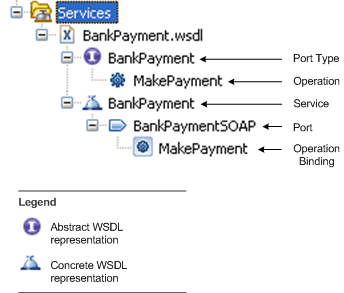Assets
Assets include XPDL package files, WSDL files, documents, business object models, and so on that relate to the project, and they are usually stored in special folders under the project.
When you create the project, you can decide which types of assets to include, and also designate a special folder for each asset type.
For example, the default analysis project has special folders for business objects, forms, organization models, process packages, and business assets:
For more information about special folders, see Special Folders.
Because TIBCO Business Studio is extensible, there may be other types of assets displayed. For more information about special folders, see Special Folders.
Business Process Assets
Business process assets include the XPDL package file and all the associated processes, data fields, parameters, and so on. The default special folder for business processes is called Process Packages.
Forms Assets
Forms assets include all the files and parameters necessary to display the forms that you have created in your project. These include XML, HTML, and properties files, as well as the parameters used by the forms. The default special folder for these assets is called Forms.
Organization Model Assets
Organization Model assets include the organization model and its components, such as organization units, positions, groups, and so on.
Service Assets
Service assets include the WDSL files for any web services that you import into your project. The default special folder for these assets is called Service Descriptors.
You can specify either an abstract or concrete WSDL file:
- An abstract WSDL document defines an abstract messaging model without reference to protocols or encodings, and consists of port types and operations.
- A
concrete WSDL document contains the abstract definitions and the communication protocols and data formats by which the operations defined in the abstract WSDL document can be invoked. A concrete WSDL file consists of the elements from the abstract WSDL file as well as an operation binding.
In the Project Explorer, both the abstract and concrete parts of the WSDL file are represented when you expand the WSDL file:

Business Object Model Assets
Business object model assets include the files for any business object models that you create.
